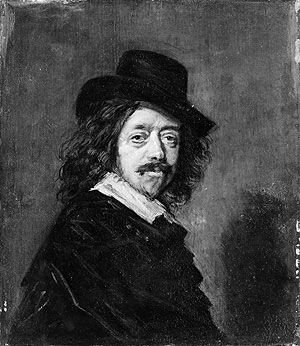(Antwerp 1580- Haarlem 1666)
This painter from the Netherlands was disciple of Karel Van Mander (1600-1603). He entered in the Guild of Saint Luke in 1610. In 1616 while he was living in Antwerp, he contacted Rubens, who visited him in Haarlem in 1624. Hals’ genius is showed mainly on the portrait that was the genre in which his surprising skills outstand. Above all, he grasped the gestures, the faces and the briefest expressions in a surprising way as we can see in his works Jacobus Zaffius (Haarlem), René Descartes (Louvre Museum) and Gipsy Girl (Louvre Museum).
Nevertheless, he is better known by his bourgeois group portraiture, in which he gave to every figure the same treatment. He gave up the traditional hierarchical solution and positioned the different heads in a way that they appear at the same level in harmony. This way there were neither secondary figures nor subordinate personages as we can see in Banquet of the Officers of the St George Civic Guard (1616) and in Archers of St. Adrian.
He avoided the feeling of stiffness thanks to his technical virtuosity and he got paintings full of life and mobility. Between 1624 and 1628 he was influenced by the School of Utrecht. His predilection for the scenes in the open air and for the bright and luminous tonality is the reflection of the innovations imported from Italy by the Dutch Caravaggists H. Terbrugghen and G. Van Honthorst. We can see this influence in the work Married Couple in a Garden.
After his death, his artwork was almost ignored or underestimated. It changed in the nineteenth century, when Courbet and subsequently the impressionists included his name on the list of Great Masters of the occidental painting.
Hals influenced prominently in the impressionists because of the spontaneity of his way of painting and the strength of his colours.

 World Art Day: 10% in original artworks
World Art Day: 10% in original artworks 
